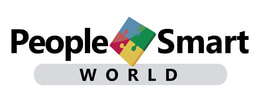|
www.PeopleSmartWorld/Blog
What if people knew how to “read” people better when on Facebook, Twitter or other social media sites? Wouldn’t it help them to increase their business and their productivity and ultimately, not only increase their cash flow, but also improve their personal and business relationships? So how does one learn the art of people reading? First before I tell you how, my PeopleSmart World business partner and dear friend Carol Dysart happened to mention to me about this guy she saw on the news one night on TV. This guy had worked as a flight attendant for 20 years and had lost his cool with a surly passenger, who got up before he was supposed to. The grumpy passenger hit the attendant on the head who was trying to prevent him from pulling down his luggage, in getting ready to exit the plane!
The attendant got so mad that he shouted a rather not so nice word, grabbed a beer from the galley, opened the emergency door, deployed the chute, and then out he jumped! He slid down and off that airplane before anyone knew what had happened! When Carol told me how she could read what she saw from his behaviour and that she predicted why it had happened, it just fascinated me and I asked her to tell me more. Carol said, “Here’s what I got…When I looked at him, I read his style as somebody who was what we call a High C – or someone who puts most of their energy into doing a great job by complying to rules. Since the report said that he’d been 20 years in that field I also knew that this meant he had been dealing with all types of people for many, many years – something that is not too comfortable for people with that personal style. He had to have had some social interest, but what I could observe was that he didn’t have an open, smiling face. He displayed a furrowed brow and a scowl. I was guessing at his “C-ness” which is compliance to rules, and that he was a cautious style. Because he had blown up at the customer showed me that he was also at the end of his patience. Carol has always been intrigued about the fact that the DISC model is something that you can use anywhere, because it’s about observable behaviour. The man that invented the system called DISC, Dr. William Marston in the 20’s said, “You can tell what motivates a person if you can observe their presenting style.” But just to finish the attendant’s story, part of his style is that he’s a High C – the Compliant, cautious type of style, and he holds things in. He doesn’t like to share personally, he’s very efficient, probably he does his job extraordinarily well, and yet when things bubble away too long and are held in, yep that’s right, he exploded! That was what happened. He just exploded for no reason, supposedly, in the moment. But who knows what was going on in his personal life before that? It was just a quick observation. The art to “people reading” is to look and watch somebody, and ask a few questions. When someone asks you to join their networks or be their friend on Facebook, do you read their personal profile? If I’m on Facebook I can start to see who a person is in their profile just by the kind of words they use. In the past it used to be how you looked on paper for example on your resume, the credit report, or in the newspaper, all those things. But now it’s more about how you look online. For those reading this that know nothing about the four DISC personality styles, here is a snapshot. DISC is an acronym for the following words, “D” stands for dominance, “I” stands for influence, “S” stands for steadiness, and “C” stands for compliance. D and I people are both outgoing and direct, and they’re more proactive. The C and the S people are the more cautious types. They’ll choose a more indirect approach. If you can imagine them at a party… the C and S will not rush into a brand new group of people and start introducing themselves. At a networking event you can spot them. They’ll be cautiously in a corner or sitting down at the table or they’ll be really grateful if you take the initiative and go and introduce yourself and introduce them around. So the question is how do you recognize the different styles on Facebook or Twitter? Let’s first talk about the outgoing and direct and indirect types of people. It’s in their faces, first of all. If they put their face right in the middle of a picture of themselves up close, you know that they have a strong and outgoing personality. These styles want you to see them and they probably have what we call strong ego strength. Now that doesn’t mean ego, like a bad thing. Ego strength means they have a strong sense of “I am,” (who they are). The S and the C styles may know who they are but they won’t tell you. They’ll let you find out about them. So the C and S photos online will be a little more reserved. They might be cautiously smiling; you can see it coming through their eyes. They’ll have, maybe, a pleasant look on their face if they like having their picture taken. Usually if you see in a picture someone that isn’t smiling looking very powerful and indirect, it’ll either be the C style or the D style. Remember in this model, the D’s and the C’s focus on the task. Again, D is dominance to problem solving, I is influence with people, S is steadiness to the task, and C is compliant to the rules. These are four very different qualities. We have all of them in our style, and we can use all of them, but we use them in different levels of intensity, depending on the situation. Because DISC is NOT a psychological model but rather a way to predict one’s needs-motivated behaviour, once we understand and can recognise, which one of the four major styles is primary for them – Dominance, Influence, Steadiness or Compliance, then our chances of accurately guessing what interests them and what things they focus on increases. The D’s and C’s are focused on task rather than on winning friends. It isn’t that they aren’t able to be friendly. It is just that other things have higher priorities - like getting the job done quickly or getting it done right! They are bottom line people whereas the I and the S are more focused on people, so that makes them more open, they smile more and are more interested in how people feel. You could say that the I and the S-style of people are into aspects of BEING-ness while the D and the C are more into DOING-ness. So look at their online profiles. You can start to look for clues in what they say or promote. They are giving out clues if you know where to look. What types of things do they report doing? What are they proud of? Are they talking more about things of a bottom line or technical nature? Or is it more about people or teams or ways people like being supported? Start being open to what DISC is really saying about you and know that your style is walking through the door with you (it’s nothing you can hide)! People go, “Oh I don’t want to have people see my profile” and I go, “Why not? You see, they already know it the moment you come through the door or post online!” Here's to your success in all relationships! Carol and Sandra P.S. For those of you that would like to complete a DISC assessment for learning what DISC style you are click here
0 Comments
Leave a Reply. |
AuthorSandra is very passionate about supporting others to be the best they can be through sharing her stories and experiences she has gained along the way... Categories
All
Archives
March 2022
|
Partner with PeopleSmart
© Copyright 2024 - PeopleSmart Enterprises NZ Ltd. All Rights Reserved.
Privacy Policy


 RSS Feed
RSS Feed